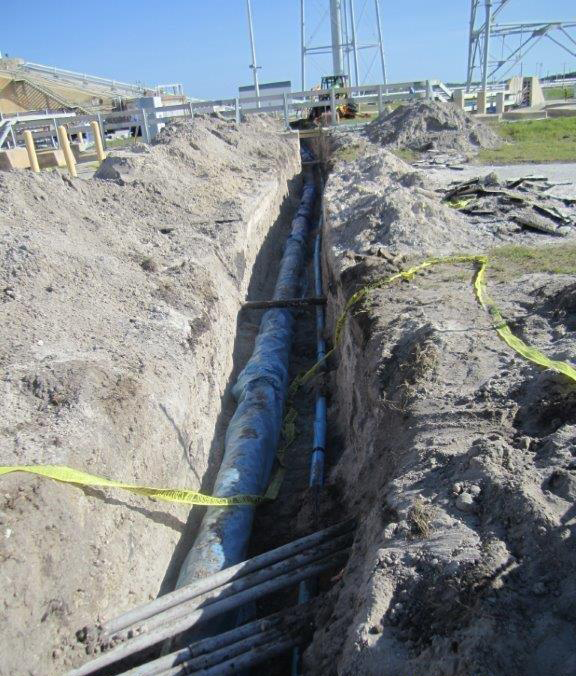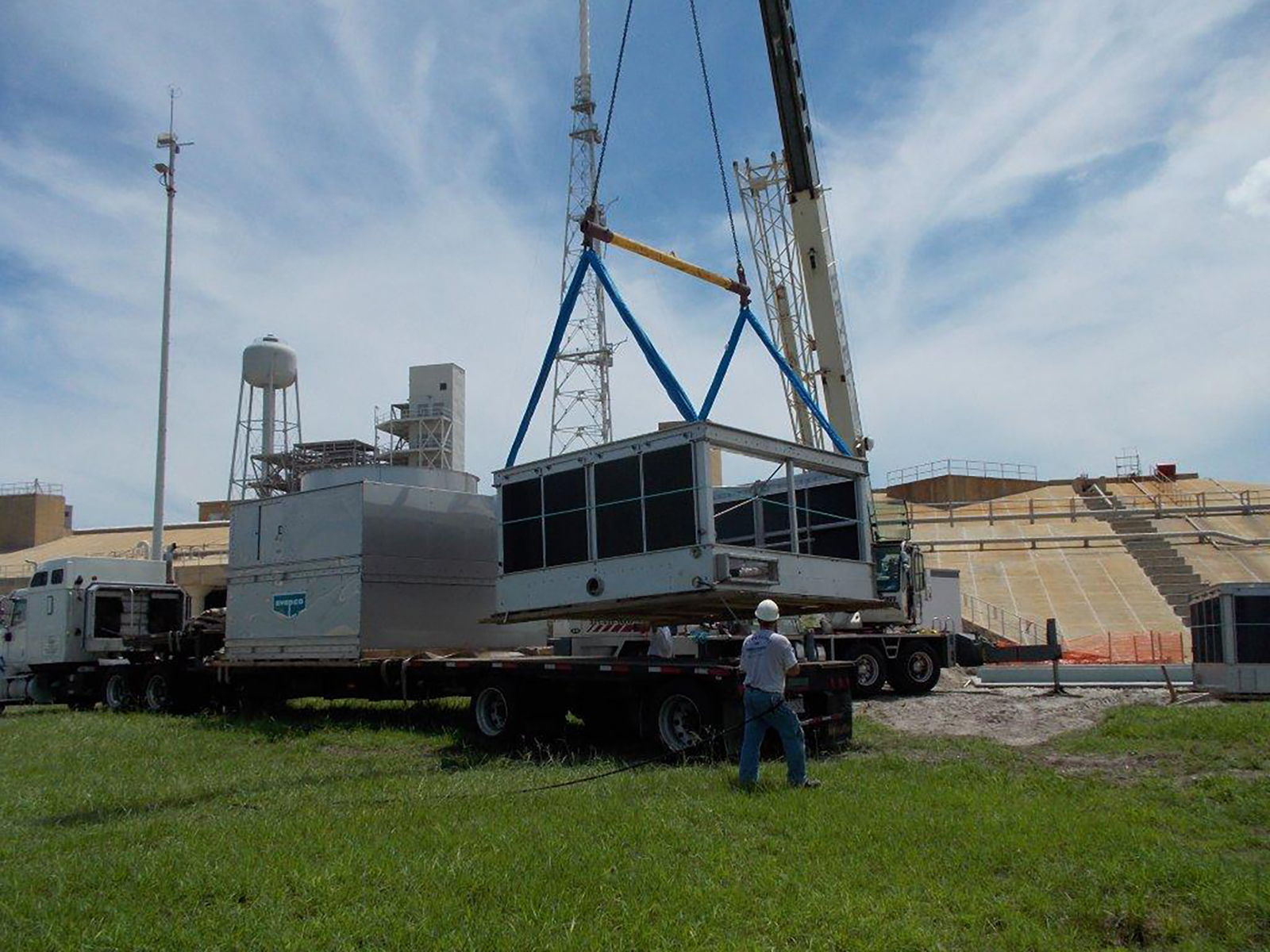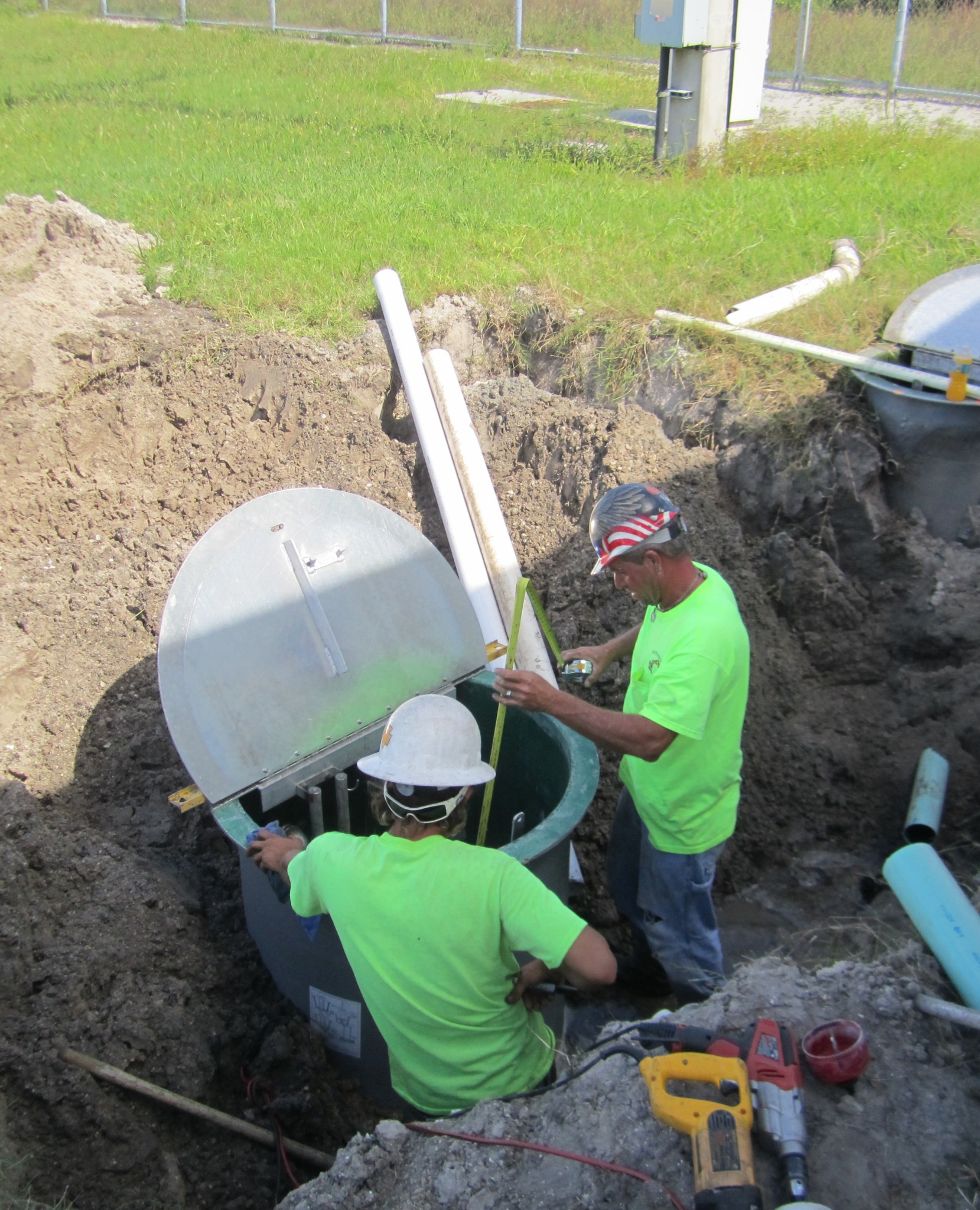By Linda Herridge
NASA’s John F. Kennedy Space Center
Launch Pad 39B at NASA’s Kennedy Space Center in Florida is undergoing a metamorphosis from top to bottom to support the agency’s Space Launch System (SLS) rocket with the Orion spacecraft atop for their first integrated uncrewed flight test. While modifications to the surface of the pad and ongoing work in the flame trench are visible, upgrades to other systems may not be as obvious, but are vital to ensuring safe and successful launches into deep space and the journey to Mars.
“We have been steadily working a series of projects to modernize or refurbish every part of the pad,” said Regina Spellman, launch pad senior project manager in the Ground Systems Development and Operations Program (GSDO). “Upon completion of this group of projects, we are entering the home stretch in our preparation for the first launch.”
These upgrades include a new communication system; new heating, ventilation and cooling system; replacement of water system piping in the pad perimeter; and installing new ignition overpressure/sound suppression bypass valves at the valve complex. All of these improvements are necessary to support pad prelaunch processing and launch requirements for SLS and the Orion.
“There is a feeling of excitement starting to build as Pad B nears being operational once again,” said Lori Jones, an engineer and project manager for Construction of Facilities for the pad.

GSDO is overseeing upgrades to Pad 39B and other facilities to support NASA’s deep-space missions and the transition to a multi-user spaceport.
HVAC and Controls
Refurbishment of the heating, ventilation and air conditioning (HVAC) systems inside the Pad B perimeter was completed in July 2016. The HVAC systems in the Operations Support Building I and Logistics Building in the nearby Launch Complex 39 area also were upgraded and completed in July. A construction contract was awarded to RUSH Construction Inc. of Titusville, Florida, in 2013 to perform the work.
Refurbish and Upgrade Water Systems
New potable and non-potable system piping was installed within the pad perimeter. Some of the associated above-ground system components that had deteriorated were refurbished or replaced. Some of the domestic wastewater systems within the Pad B perimeter also were replaced. A construction contract was awarded to RUSH Construction Inc. in September 2013. The project was completed in July 2016.
Ignition Over Pressure/Sound Suppression (IOP/SS) Post-Liftoff Bypass
The IOP/SS uses a large volume of water to prevent damage to the rocket from the exhaust and acoustic shock wave during launch. Installation of bypass valves in the post-liftoff portion of the IOP/SS system at the Pad B valve complex was completed in July. The new bypass valves will enable the flow of water through the mobile launcher’s deck water nozzles, also known as rainbirds, just before liftoff (T-0) to prevent the water from spraying the SLS rocket in the event an on-pad abort occurs after the IOP/SS water flow has started. At T-0, the main 48-inch valves located in the IOP/SS valve complex will open to ensure the flow of water and timing requirements are achieved. A construction contract was awarded to Sauer Inc. of Oak Hill, Florida, in September 2014 to complete the project.
Communications System
A new, state-of-the-art communications system has replaced all of the Apollo and space shuttle era equipment in the Pad Terminal Connection Room and the pad perimeter. The new system will enable users to service spacecraft and launch vehicles on the launch pad during pre-mission checkout and countdown on launch day. All legacy switches, electronic devices, paging speakers, digital keysets, telephones, communication racks and more than 592,000 pounds of cabling were removed. Updated communication equipment was installed, including new network switches, timing, cameras, telephones, paging speakers, and more than 104,000 feet of new cabling.
Communication Systems upgrades included new fiber optics from the pad to the Launch Control Center via the outdoor cable plant and into various communications rooms.
The new communications system will support staff and customers at the pad with network, video and audio communications, as well as support for pad safety operations, leak detection and monitoring, range safety, radio frequency and telemetry. The new system also will support advanced RF monitoring, cryogenics, the Environmental Control Subsystem, fire alarms, ground special power, the Kennedy Ground Control Subsystem, the Kennedy Complex Control System, lightning protection monitoring system, security, the sensor data acquisition system and the weather subsystem.
All of the Pad B designs were created by the Information Technology (IT) organization with support from the Information Management and Communication Support (IMCS) contractor team for GSDO. IMCS, with support from other contractors, is performing the work. The project was awarded in January 2010 and is targeted for completion in late September.
Upgrades to the surface of Pad B as well as the systems below and surrounding the pad will support the new processing and launch requirements for SLS and the Orion spacecraft and deep-space missions, including the journey to Mars. The modifications and improvements to processing and launch facilities will support Kennedy as a multi-user spaceport for government and commercial launches for years to come.




























